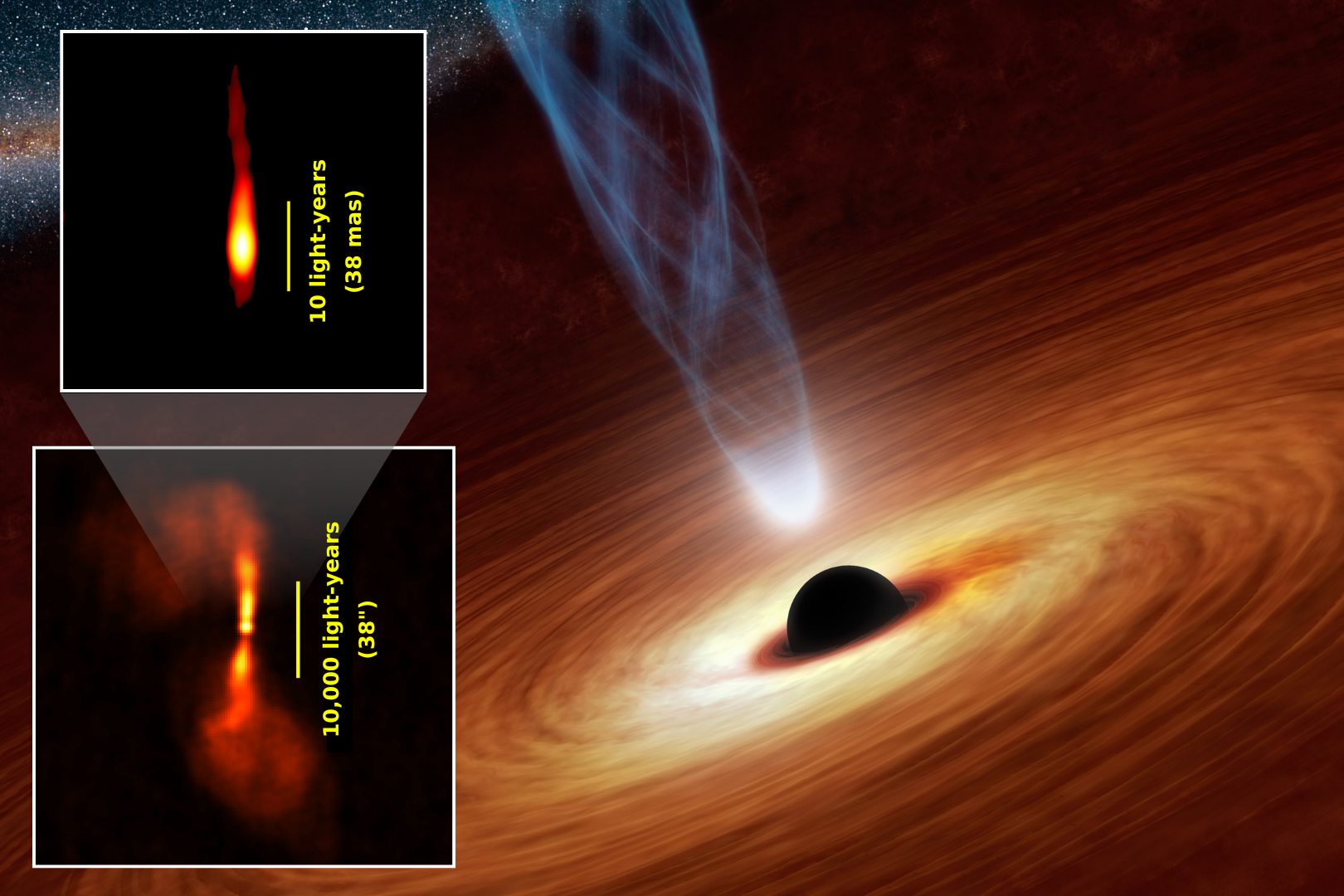An international research team including the Mizusawa VLBI Observatory of the National Astronomical Observatory of Japan (NAOJ), the University of Tokyo, and Nagoya City University has revealed for the first time that the jet from the supermassive black hole in the nearby galaxy M84 loses its narrow shape much closer to the black hole than in other galaxies. This discovery, made possible by high-precision observations with the Very Long Baseline Array (VLBA) in the United States, provides new clues for understanding how black hole jets evolve and why their shapes differ among galaxies.

[Figure] Artist’s concept of a supermassive black hole with an accretion disk and energetic jets. Insets show radio observations at 1.4 GHz from the VLBA (top) and VLA (bottom), revealing the jet structure on different spatial scales(Credit: Illustration: NASA/JPL-Caltech; Radio images: Laing & Bridle 1987; Fariyanto et al. 2025.). (Click to enlarge)
Black hole jets are streams of plasma moving at nearly the speed of light. They are known for their remarkable collimation, which means staying tightly confined over enormous distances. The research team found that M84’s jet begins narrow, following a parabolic shape, but then transitions into a conical, widening flow much earlier than expected.
“We discovered that the jet in M84 loses collimation almost 100 times closer to the black hole than in other galaxies”, explains lead author Elika Prameswari Fariyanto (University of Tokyo / NAOJ Mizusawa VLBI Observatory). “M84 is the faintest galaxy nucleus so far in which the jet collimation profile has been measured in such detail. This suggests that the activity of the central black hole is closely linked to the shape of the jet”.
In many active galaxies, the jet maintains its narrow shape until it reaches the Bondi radius, a region where the black hole's gravity dominates over surrounding gas. In M84, however, the transition occurs well inside this radius. The result suggests that weaker inflows of material around the black hole provide less pressure support, allowing the jet to expand at an earlier stage.
The process can be compared to fluid flow. When the flow is confined by strong external pressure, the stream stays tight and fast. When the pressure is weaker, the stream quickly widens. Similarly, in galaxies like M84, the lack of surrounding material appears to make it harder for the jet to maintain its narrow form.
By comparing M84 with other galaxies, the team found indications that higher inflow rates lead to more effective jet collimation. Co-author Kazuhiro Hada, Associate Professor at Nagoya City University, comments, “We would like to test whether this trend is universal by observing and comparing more galaxies in the future.”
Article Information
Fariyanto, Elika P., Hada, Kazuhiro, Cui, Yuzhu, Honma, Mareki, Nakamura, Masanori, Asada, Keiichi, Wang, Xuezheng, Jiang, Wu, “Jet Collimation Profile of the Low-luminosity Active Galactic Nucleus M84: Insight into the Jet Formation in the Low-accretion Regime”, The Astrophysical Journal (2025) 911 13